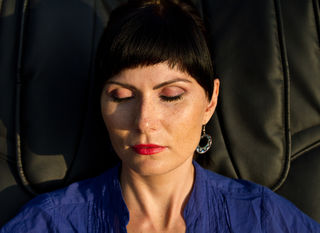Hypnosis
The Healing Practice of Self-Hypnosis
Use your mind positively
Posted October 21, 2019 Reviewed by Lybi Ma

Hypnosis sounds like such a scary thing to many people. You “go under” and maybe lose control of your mind and functions. Someone else is giving you suggestions that you may or may not like. It can be hard for the person who has experienced trauma or who doesn’t trust easily to work with a hypnotherapist and let go in a way that helps with healing or change.
Self-hypnosis is a harmless way to keep control and achieve many of the same benefits of working with a hypnotherapist to change behavior. Hypnosis can help with everything from stress management and anxiety, to weight loss and diet changes, to confidence and presentation skills. Learning hypnosis can help you study more effectively, remember information for tests, call up information when you need it, and generally calm yourself to stay open and receptive throughout the day.
Hypnosis is no more than your conscious and always-thinking mind being calm long enough for your subconscious mind—which drives the train within you, urging you on and telling you what you should and should not do—to get hold of ideas that are more beneficial and positive for you.
Learning self-hypnosis is fairly easy, but like any new skill, it does take practice. Commit to yourself the following steps at least two to three times each and every day until it becomes second nature. There are no drugs involved, no medical procedures, and no perfect conditions you have to achieve. Just practice and your mind will start to cooperate.
- The first step is to find a quiet place you can sit for about five minutes and be uninterrupted. You don’t want a ringing phone, needy kids, or your boss walking in on you. For some people, sitting in a parked car (with the doors locked and safety first) or stepping into a public bathroom stall for a few minutes could work. Otherwise, find a spot you like where you feel safe and can sit comfortably. Make sure that your back is supported and you are not liable to fall over once you start to become relaxed.
- Start by uncrossing your legs and allowing your hands to rest comfortably in your lap. Once you are comfortable, begin by taking a deep breath. Breathe in through your nose and out through your mouth, very gently and very calmly. Focus on the breath, imagine you can see it going in, and see it coming out. Take two more deep breaths and on the third breath, when you are breathing out, close your eyes.
- Sit there for a couple of minutes just allowing your breath to go in and out and focusing all of your attention on your breath. Every time you want to think a thought, or check the time, or get up and tend to a matter, gently push that thought away and come back to your breath. Do nothing other than breathe.
- Once you are fully relaxed and focused on your breath, allow your body to get very heavy wherever you are sitting. Notice your legs and your arms becoming weighted down and almost glued to the chair. It’s a comfortable state and overall a very relaxing one, as you just give in to your body weight and allow yourself to sink into wherever you are sitting.
- Once you are very relaxed, in your mind gently repeat a positive mantra such as: “I am calm, I am in control, I am relaxed.” Repeat this mantra over and over, or find one that resonates with you. The language should be “I” language and should be positive and encouraging but also soothing. Repeat this over and over and allow your body to give in to the relaxation and calm feelings you are generating.
- When you have reached your five minutes (you may have to use a timer the first session, but over time your mind will let you know when five minutes are up), you will start to feel energy returning to your body, you will focus on each limb and body part and send energy and confidence to that part, and you will take three more deep breaths, again in through your nose and out through your mouth. Count slowly backward from 10 to one and when you reach the count of one, open your eyes. Allow yourself to sit there for a couple of minutes and enjoy the positive experience of giving yourself this valuable time.
This process is not the same as meditation, because it is more active. You are engaging your mind and your body, but doing it in a calm and centered way. If you can’t afford five minutes two to three times a day, start with less and work your way up. Once you practice this, you will find the same calm feelings and thoughts spill over into your daily activities even when your eyes are open. It can be a great cure for stress, anxiety, and worry, and it doesn’t cost anything except 15 minutes of your time.


